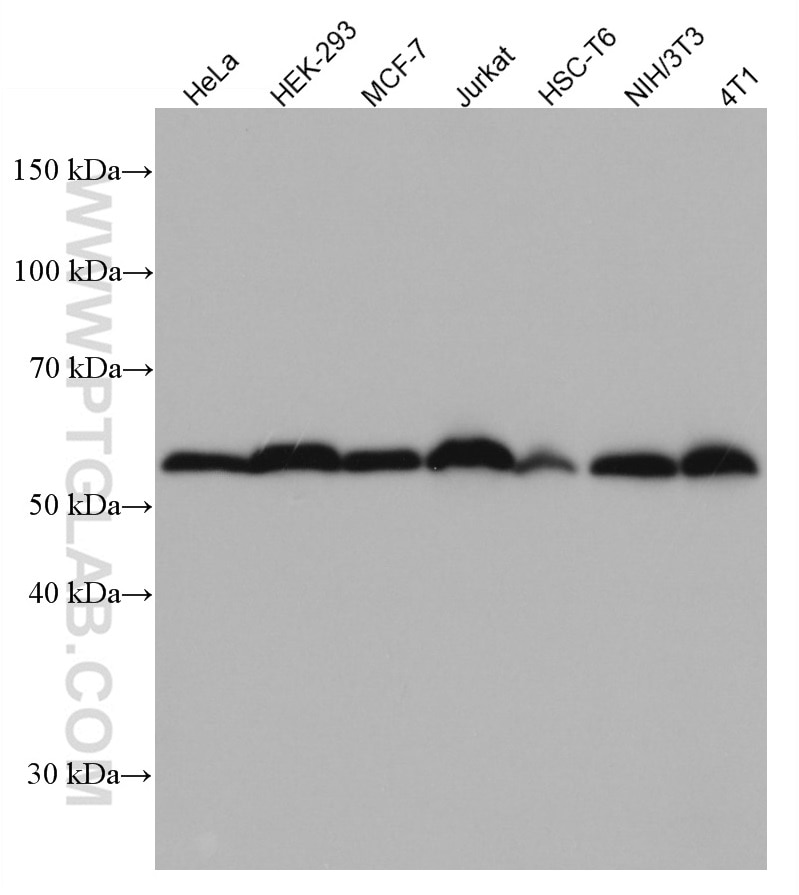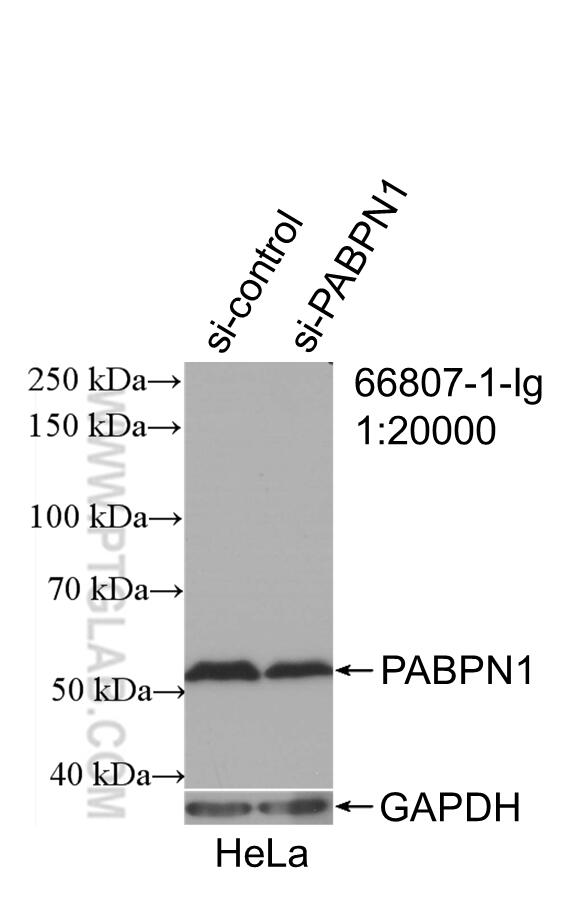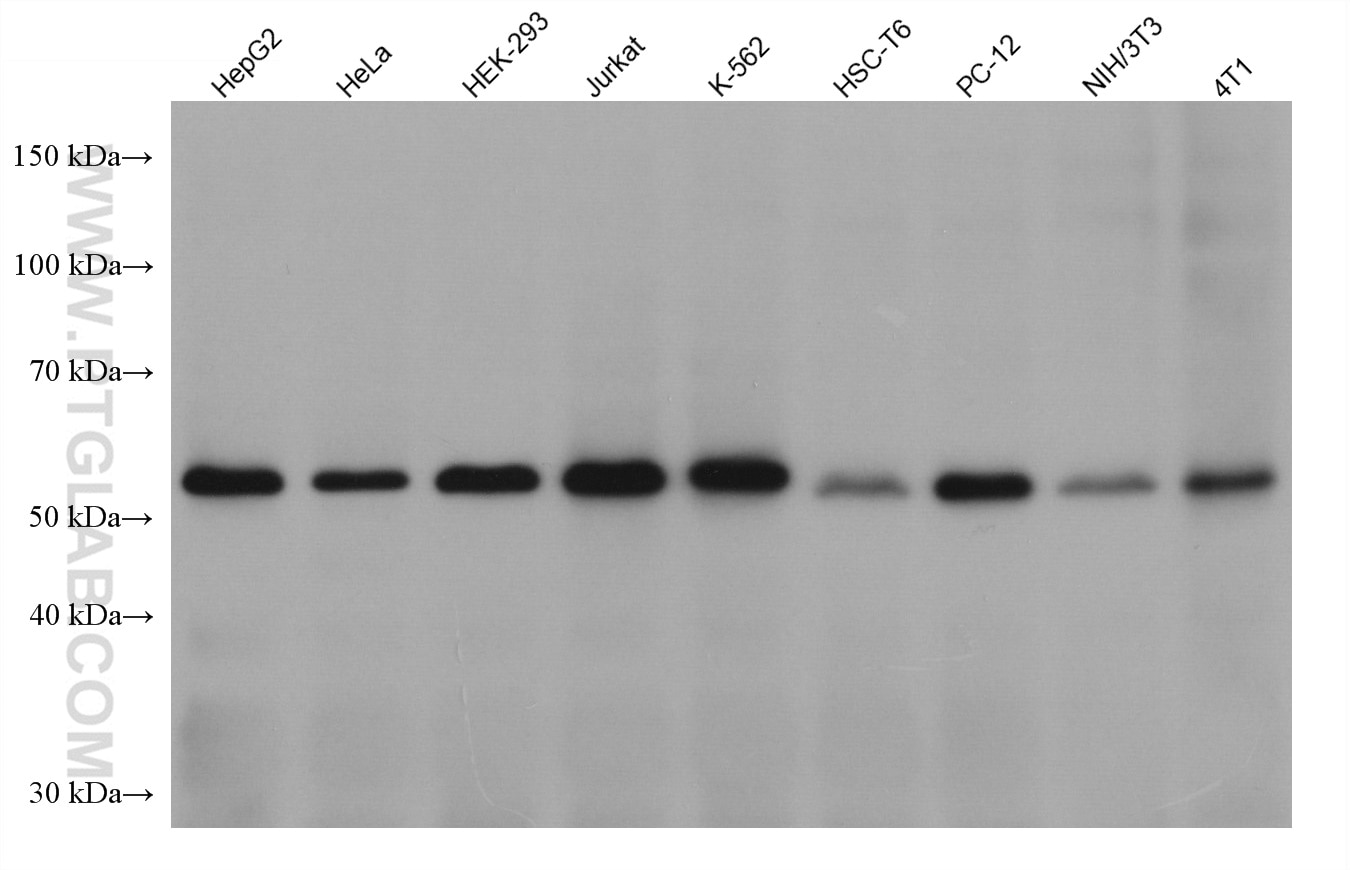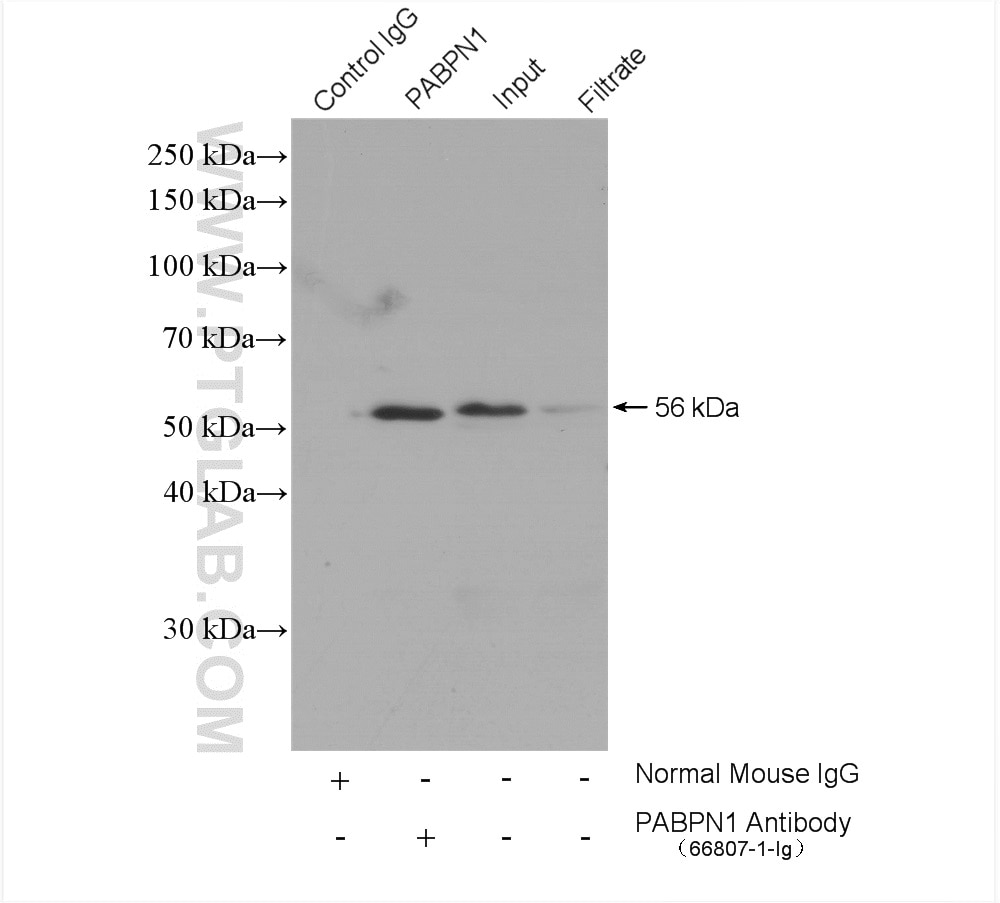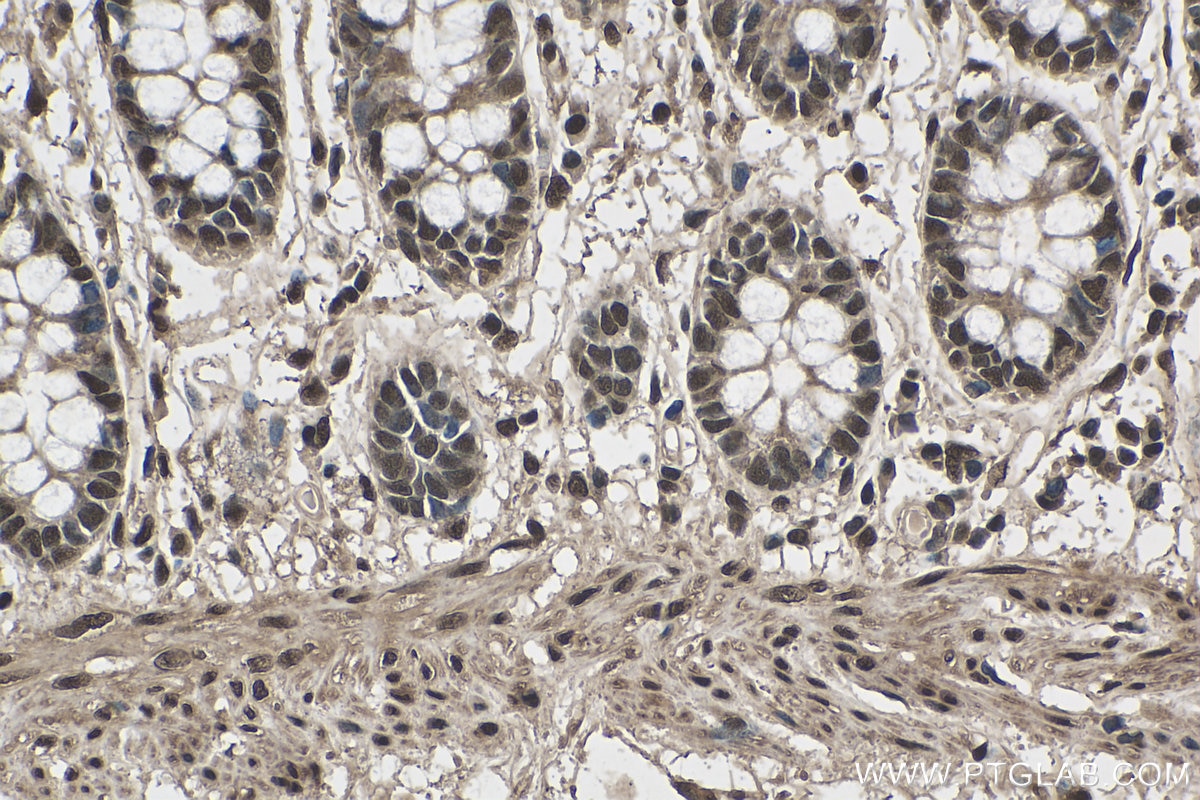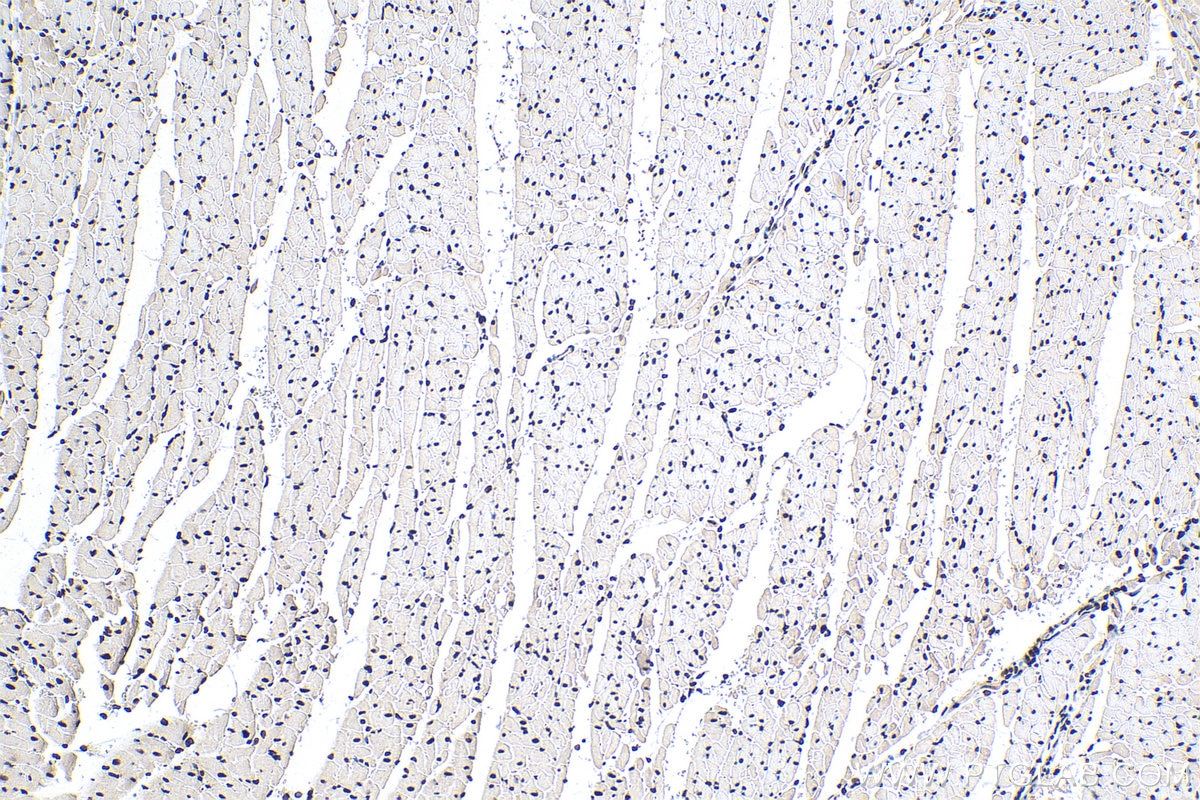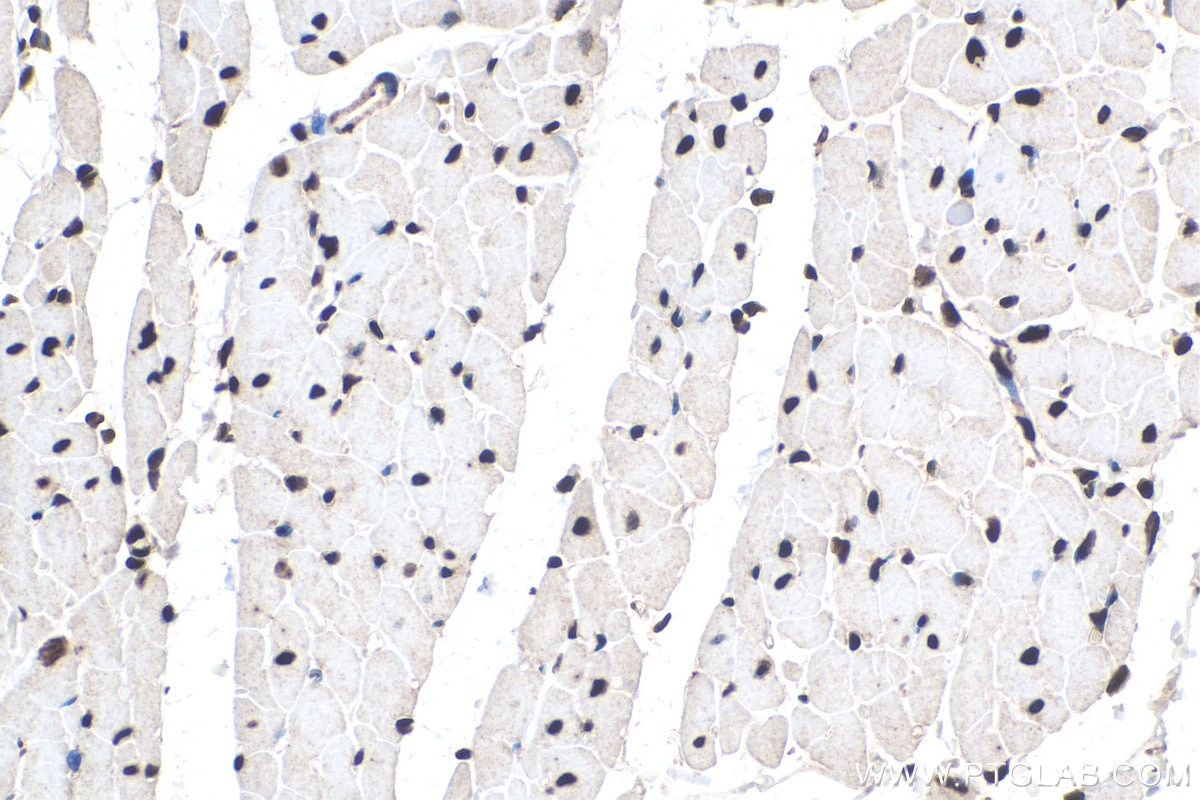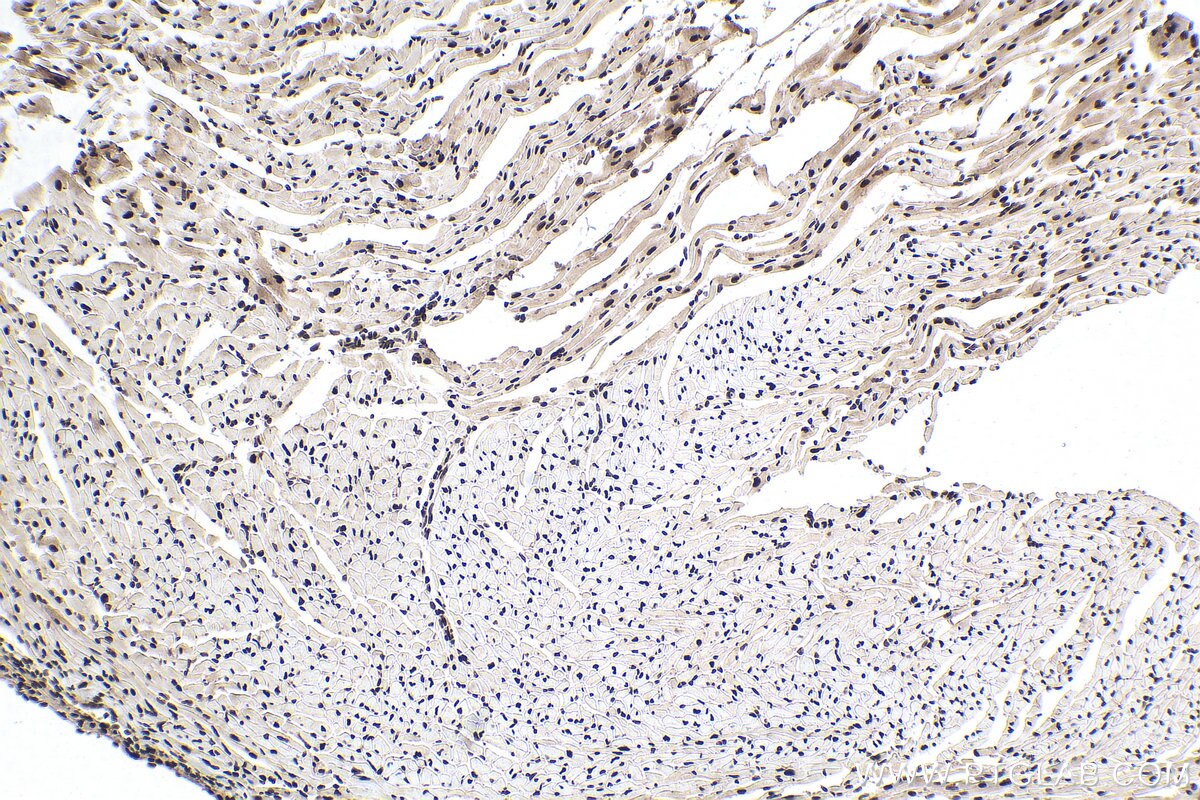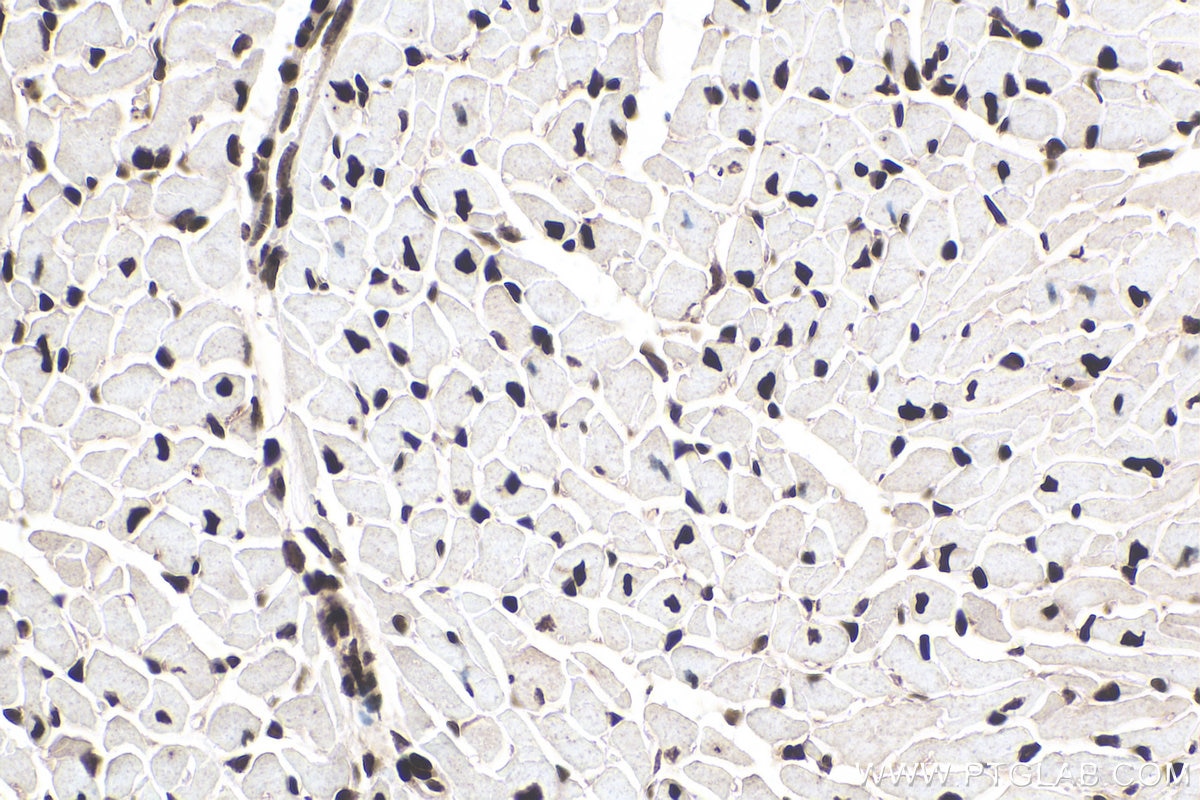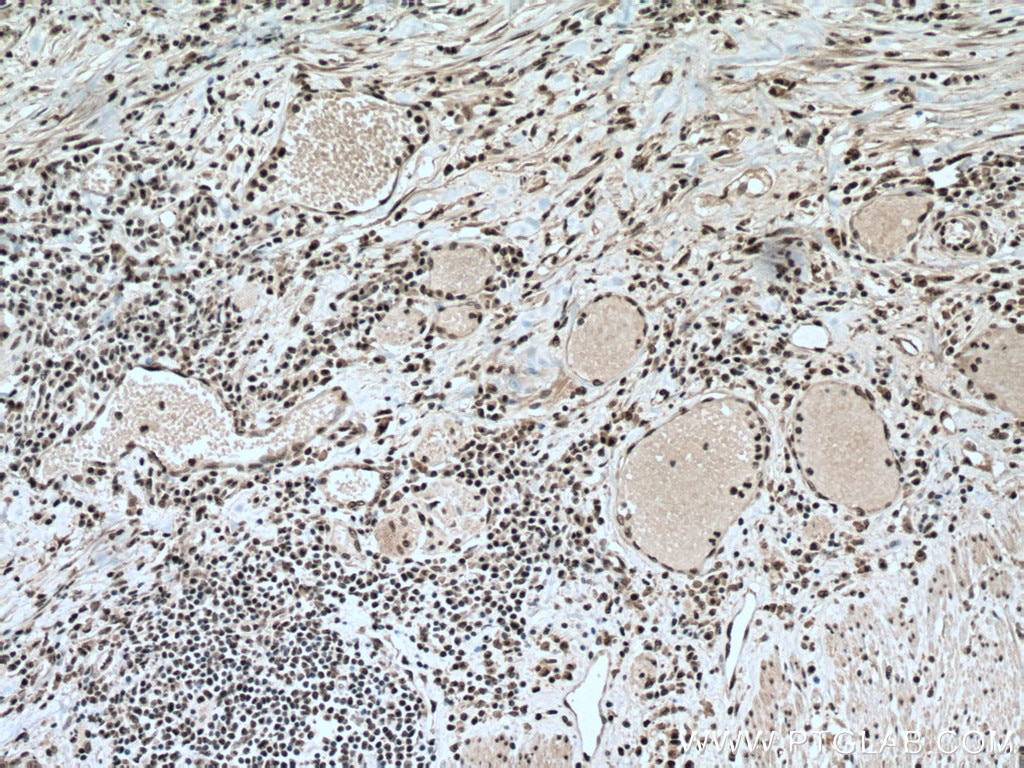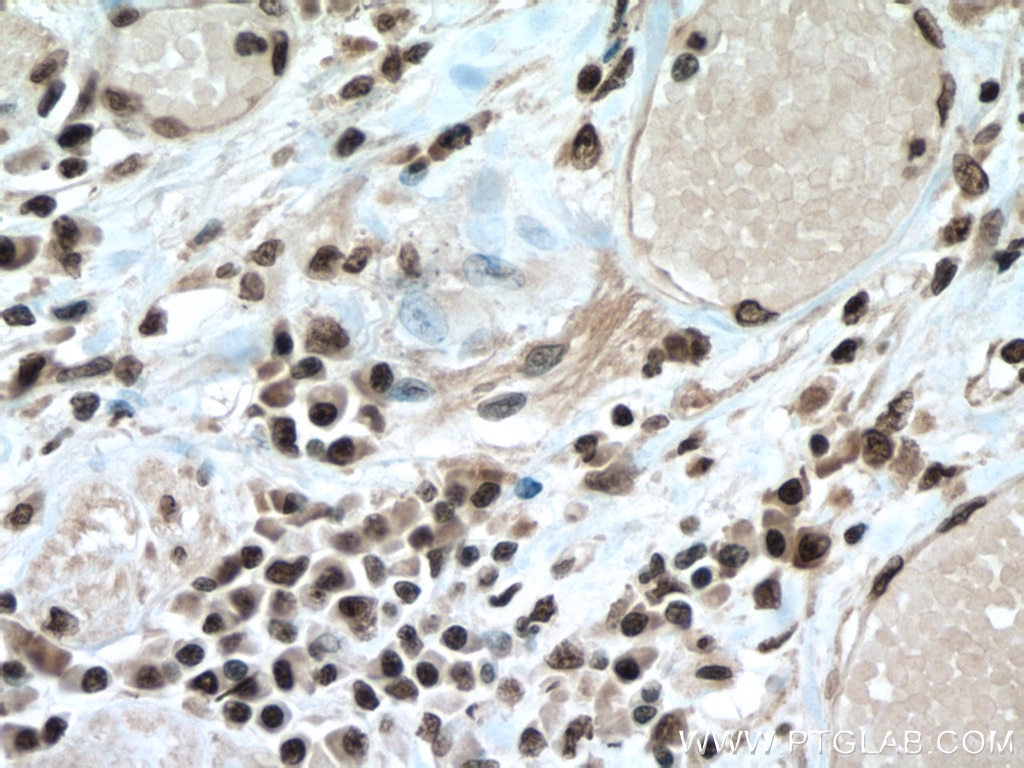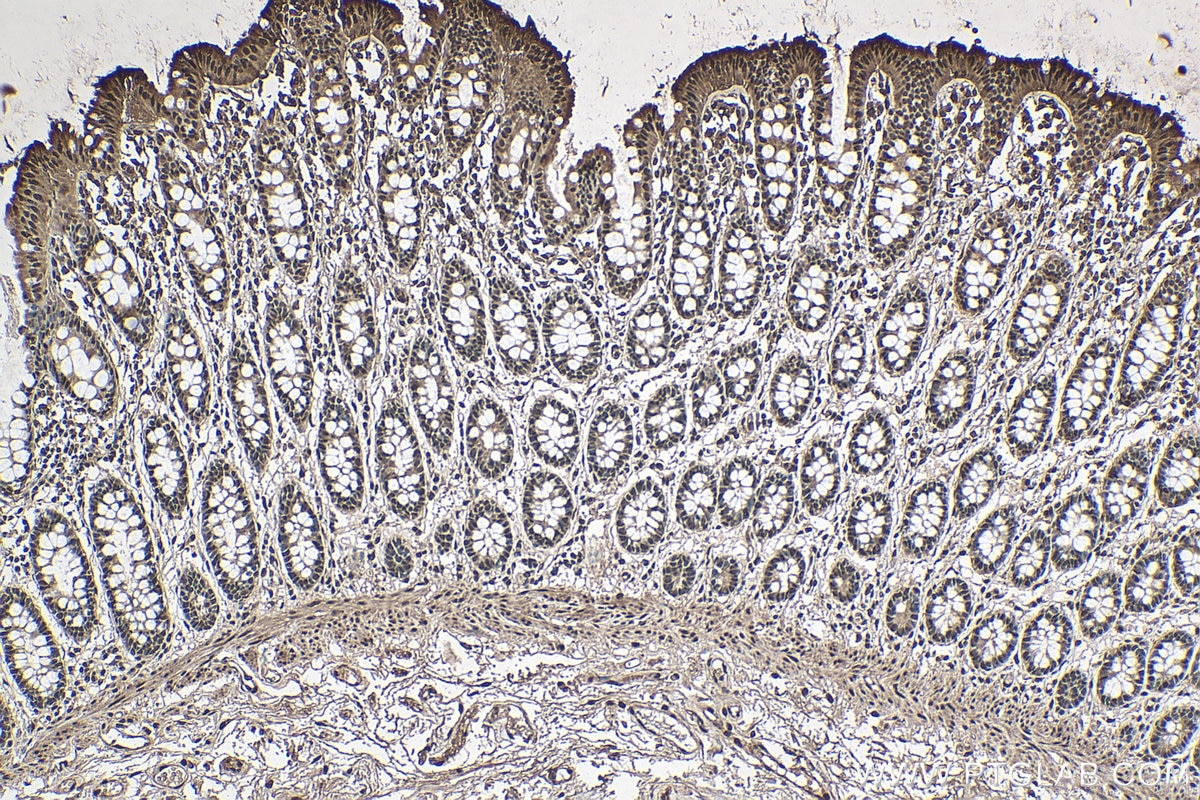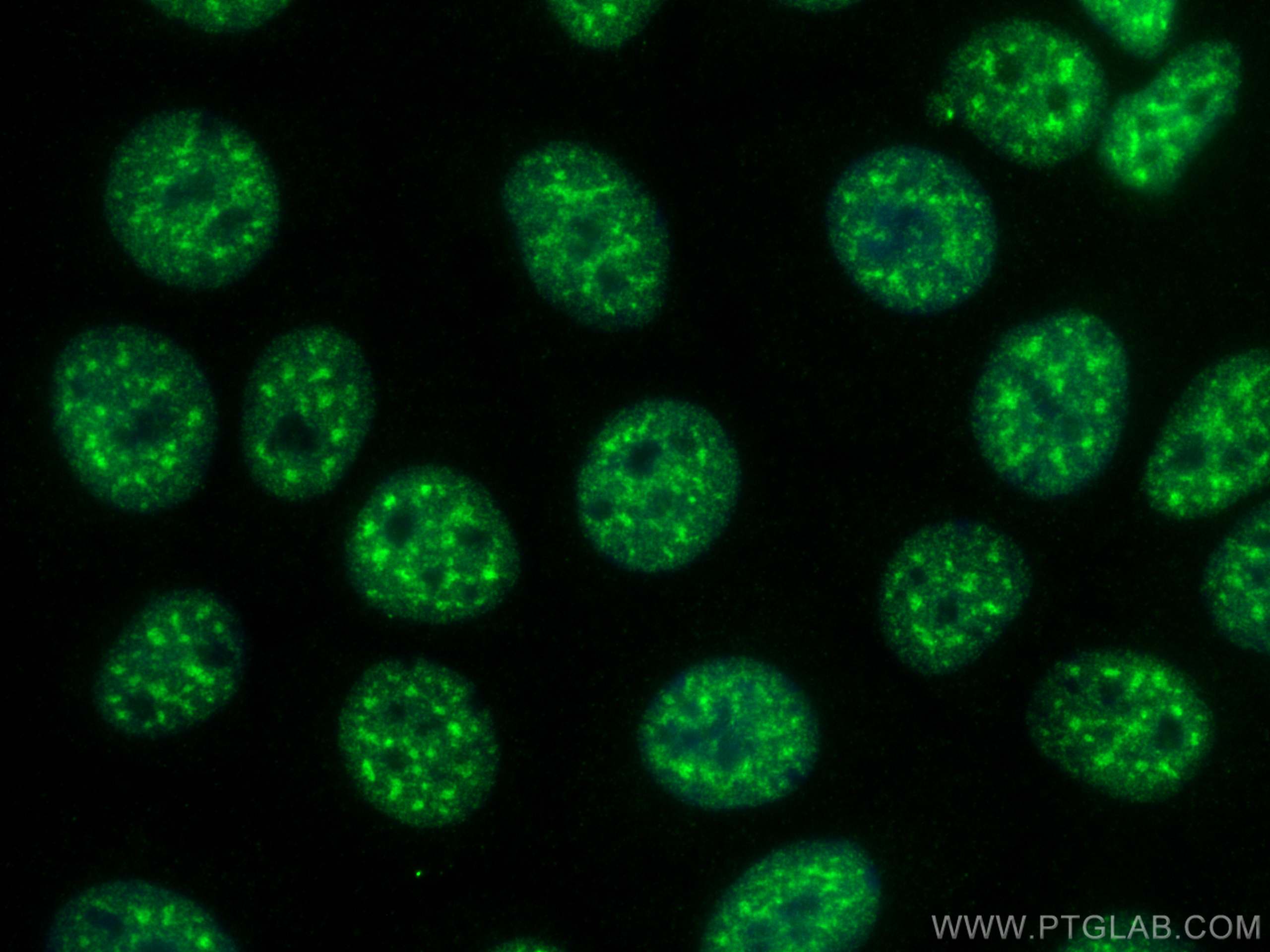- Phare
- Validé par KD/KO
Anticorps Monoclonal anti-PABPN1
PABPN1 Monoclonal Antibody for WB, IHC, IF/ICC, IP, ELISA
Hôte / Isotype
Mouse / IgG1
Réactivité testée
Humain, rat, souris
Applications
WB, IHC, IF/ICC, IP, CoIP, RIP, ELISA
Conjugaison
Non conjugué
CloneNo.
3C12E12
N° de cat : 66807-1-Ig
Synonymes
Galerie de données de validation
Applications testées
| Résultats positifs en WB | cellules HeLa, cellules 4T1, cellules HEK-293, cellules HepG2, cellules HSC-T6, cellules Jurkat, cellules K-562, cellules MCF-7, cellules NIH/3T3, cellules PC-12 |
| Résultats positifs en IP | cellules Jurkat, |
| Résultats positifs en IHC | tissu de côlon humain, tissu cardiaque de rat, tissu cardiaque de souris, tissu de cancer du côlon humain il est suggéré de démasquer l'antigène avec un tampon de TE buffer pH 9.0; (*) À défaut, 'le démasquage de l'antigène peut être 'effectué avec un tampon citrate pH 6,0. |
| Résultats positifs en IF/ICC | cellules MCF-7, |
Dilution recommandée
| Application | Dilution |
|---|---|
| Western Blot (WB) | WB : 1:1000-1:6000 |
| Immunoprécipitation (IP) | IP : 0.5-4.0 ug for 1.0-3.0 mg of total protein lysate |
| Immunohistochimie (IHC) | IHC : 1:500-1:2000 |
| Immunofluorescence (IF)/ICC | IF/ICC : 1:1000-1:4000 |
| It is recommended that this reagent should be titrated in each testing system to obtain optimal results. | |
| Sample-dependent, check data in validation data gallery | |
Applications publiées
| KD/KO | See 1 publications below |
| WB | See 5 publications below |
| IHC | See 1 publications below |
| CoIP | See 1 publications below |
| RIP | See 1 publications below |
Informations sur le produit
66807-1-Ig cible PABPN1 dans les applications de WB, IHC, IF/ICC, IP, CoIP, RIP, ELISA et montre une réactivité avec des échantillons Humain, rat, souris
| Réactivité | Humain, rat, souris |
| Réactivité citée | Humain, souris |
| Hôte / Isotype | Mouse / IgG1 |
| Clonalité | Monoclonal |
| Type | Anticorps |
| Immunogène | PABPN1 Protéine recombinante Ag27470 |
| Nom complet | poly(A) binding protein, nuclear 1 |
| Masse moléculaire calculée | 33 kDa |
| Poids moléculaire observé | 50-56 kDa |
| Numéro d’acquisition GenBank | BC010939 |
| Symbole du gène | PABPN1 |
| Identification du gène (NCBI) | 8106 |
| Conjugaison | Non conjugué |
| Forme | Liquide |
| Méthode de purification | Purification par protéine G |
| Tampon de stockage | PBS with 0.02% sodium azide and 50% glycerol |
| Conditions de stockage | Stocker à -20°C. Stable pendant un an après l'expédition. L'aliquotage n'est pas nécessaire pour le stockage à -20oC Les 20ul contiennent 0,1% de BSA. |
Informations générales
Poly(A) Binding Protein Nuclear 1(PABPN1) is one of the isoforms of poly(A) binding protein (PABP) that locating to the nucleus in eukaryotic cells. And PABPN1 plays important role in mRNA stability by regulating of poly-A tail length, mRNA decay and proximal polyadenylation site (PAS) utilization at the 3'-UTR (PMID:23300856). Another report showed that PABPN1 shuttles between the nucleus and the cytoplasm to export poly(A) RNA from the nucleus (PMID:23601051). It is reported that PABPN1 is ubiquitously expressed in almost all tissues, however, mutations in PABPN1 causes Oculopharyngeal Muscular Dystrophy (OPMD) which affected in skeletal muscles specifically. Because of a mild reduction in PABPN1 levels is sufficient to induce muscle wasting (PMID:27152426). Acetylation, Methylation, Phosphoprotein are common post-translational modifications of PABPN1 protein. And 50-55 kDa bands have been reported (PMID: 29939290; 28361972).
Protocole
| Product Specific Protocols | |
|---|---|
| WB protocol for PABPN1 antibody 66807-1-Ig | Download protocol |
| IHC protocol for PABPN1 antibody 66807-1-Ig | Download protocol |
| IF protocol for PABPN1 antibody 66807-1-Ig | Download protocol |
| IP protocol for PABPN1 antibody 66807-1-Ig | Download protocol |
| Standard Protocols | |
|---|---|
| Click here to view our Standard Protocols |
Publications
| Species | Application | Title |
|---|---|---|
Cell Rep Proteomics reveal cap-dependent translation inhibitors remodel the translation machinery and translatome. | ||
J Biol Chem Extracellular 5'-methylthioadenosine inhibits intracellular symmetric dimethylarginine protein methylation of FUSE-element binding proteins | ||
Cell Biosci PABPN1 regulates mRNA alternative polyadenylation to inhibit bladder cancer progression
| ||
Nat Cell Biol An mRNA processing pathway suppresses metastasis by governing translational control from the nucleus | ||
Mol Cell The MYCN oncoprotein is an RNA-binding accessory factor of the nuclear exosome targeting complex |
